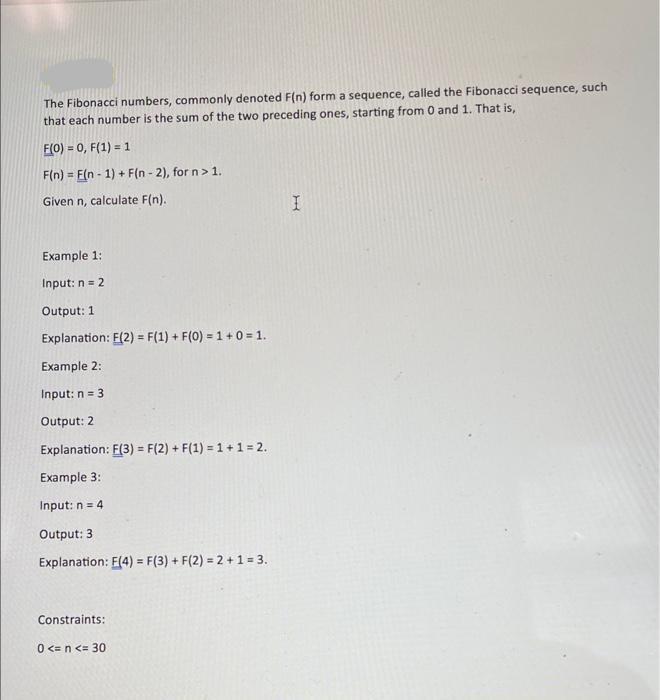Answered step by step
Verified Expert Solution
Question
1 Approved Answer
The Fibonacci numbers, commonly denoted F(n) form a sequence, called the Fibonacci sequence, such that each number is the sum of the two preceding

The Fibonacci numbers, commonly denoted F(n) form a sequence, called the Fibonacci sequence, such that each number is the sum of the two preceding ones, starting from 0 and 1. That is, F(0) = 0, F(1) = 1 F(n) F(n-1)+F(n-2), for n > 1. Given n, calculate F(n). I Example 1: Input: n = 2 Output: 1 Explanation: F(2) = F(1) + F(0) = 1+0=1. Example 2: Input: n=3 Output: 2 Explanation: F(3) F(2) + F(1) = 1+1=2. Example 3: Input: n = 4 Output: 3 Explanation: F(4) = F(3) + F(2) = 2+1=3. Constraints: 0
Step by Step Solution
There are 3 Steps involved in it
Step: 1
To calculate the Fibonacci number for a given value of n you can use a recursive fu...
Get Instant Access to Expert-Tailored Solutions
See step-by-step solutions with expert insights and AI powered tools for academic success
Step: 2

Step: 3

Ace Your Homework with AI
Get the answers you need in no time with our AI-driven, step-by-step assistance
Get Started


